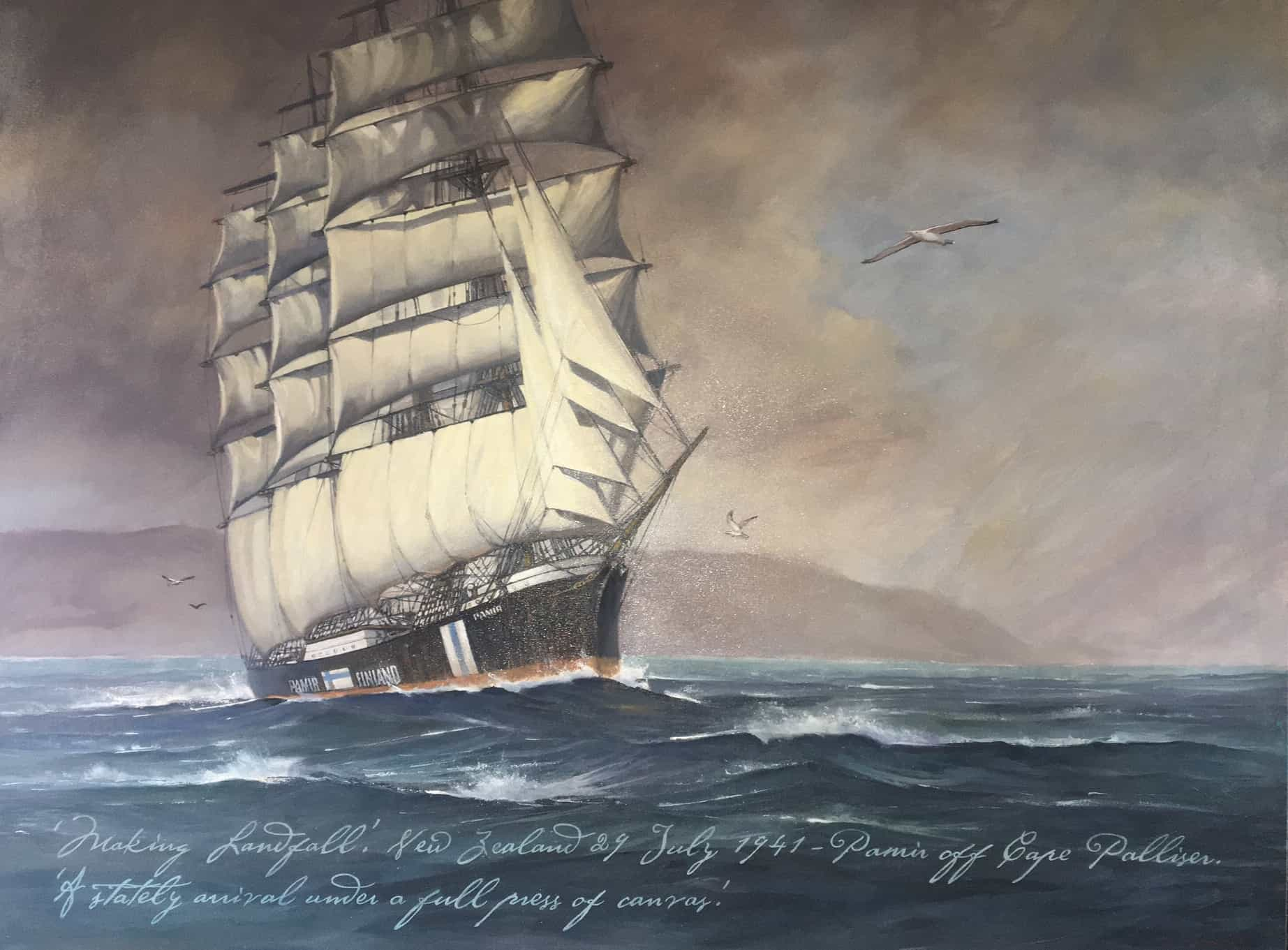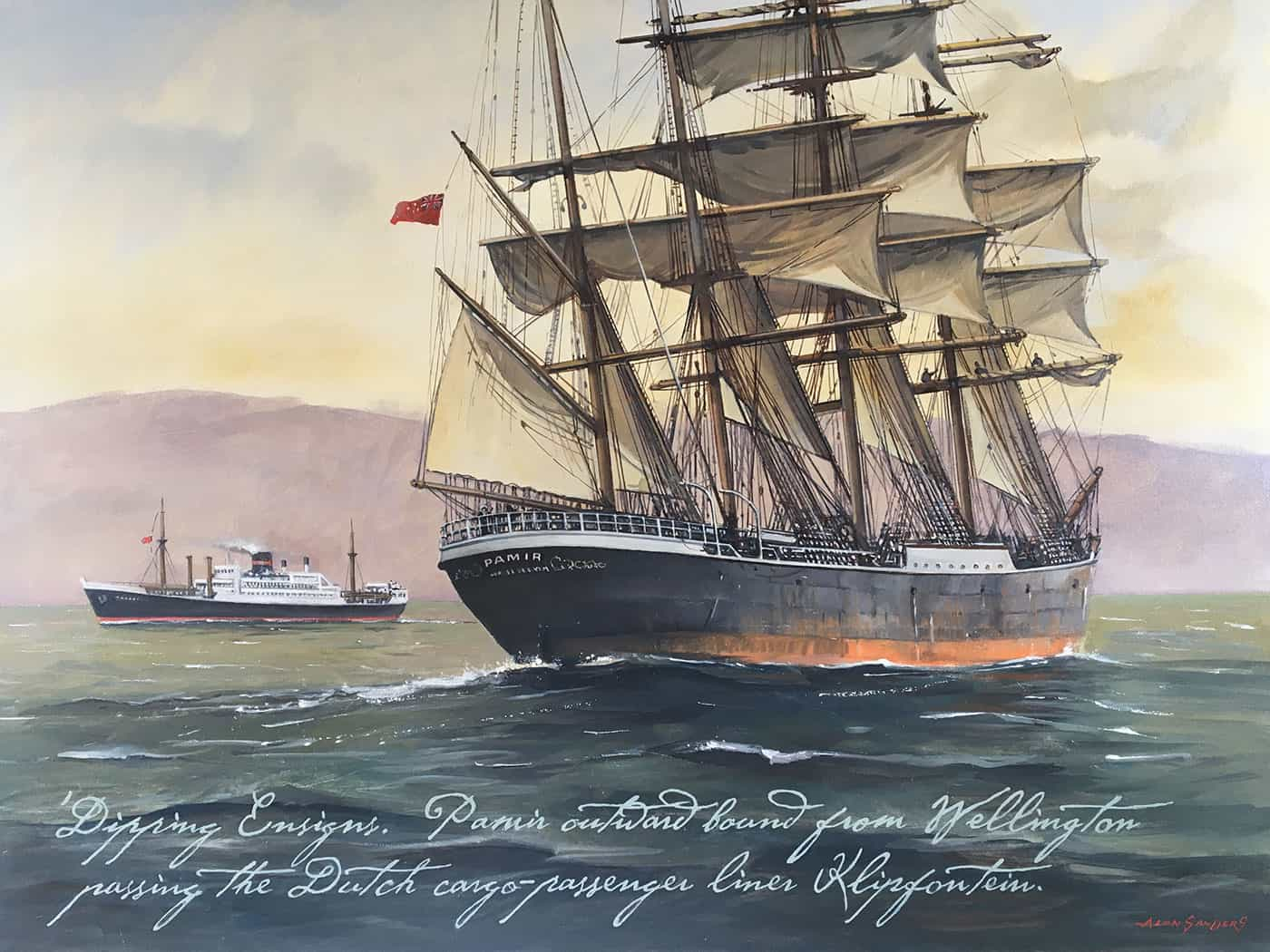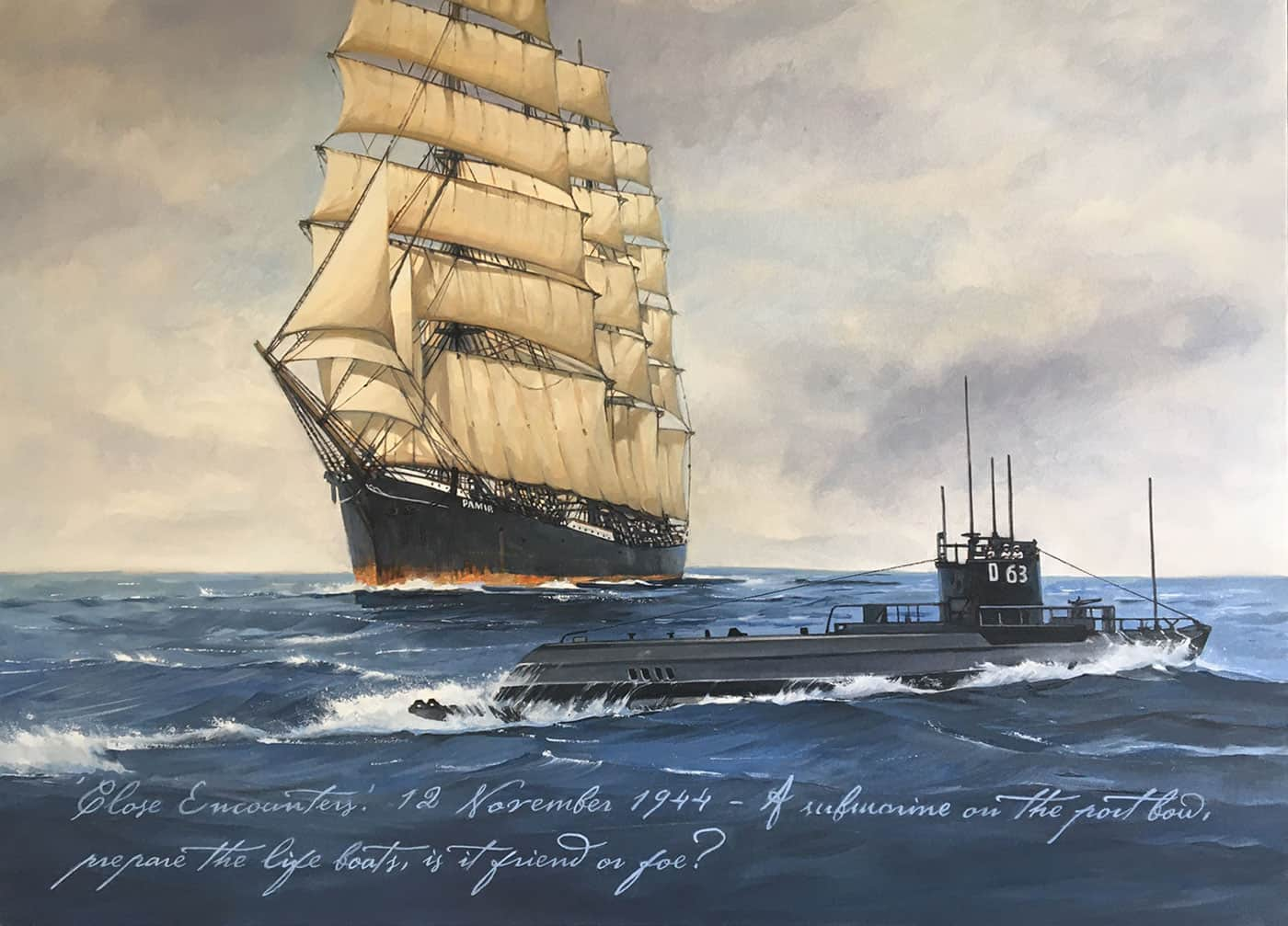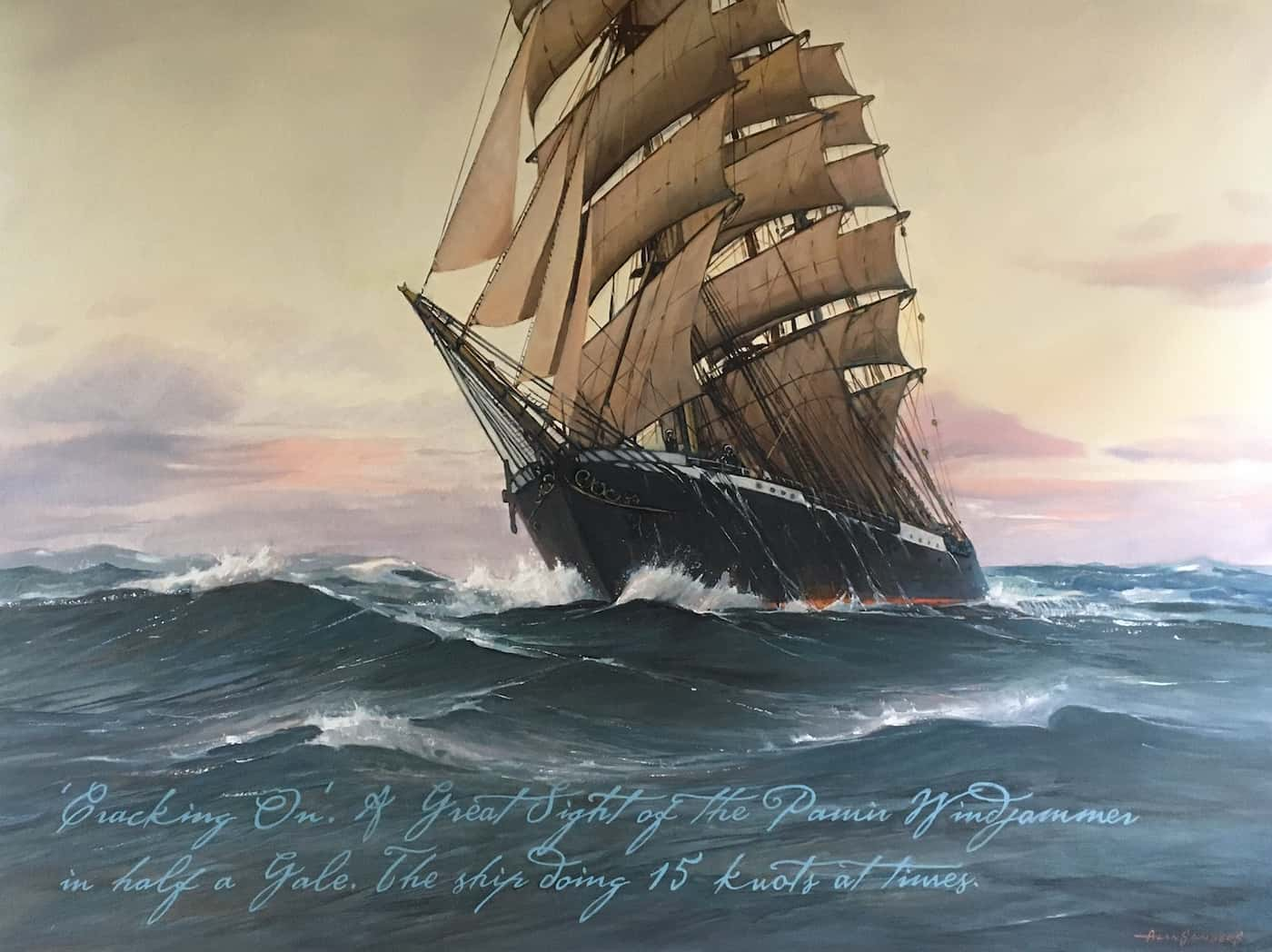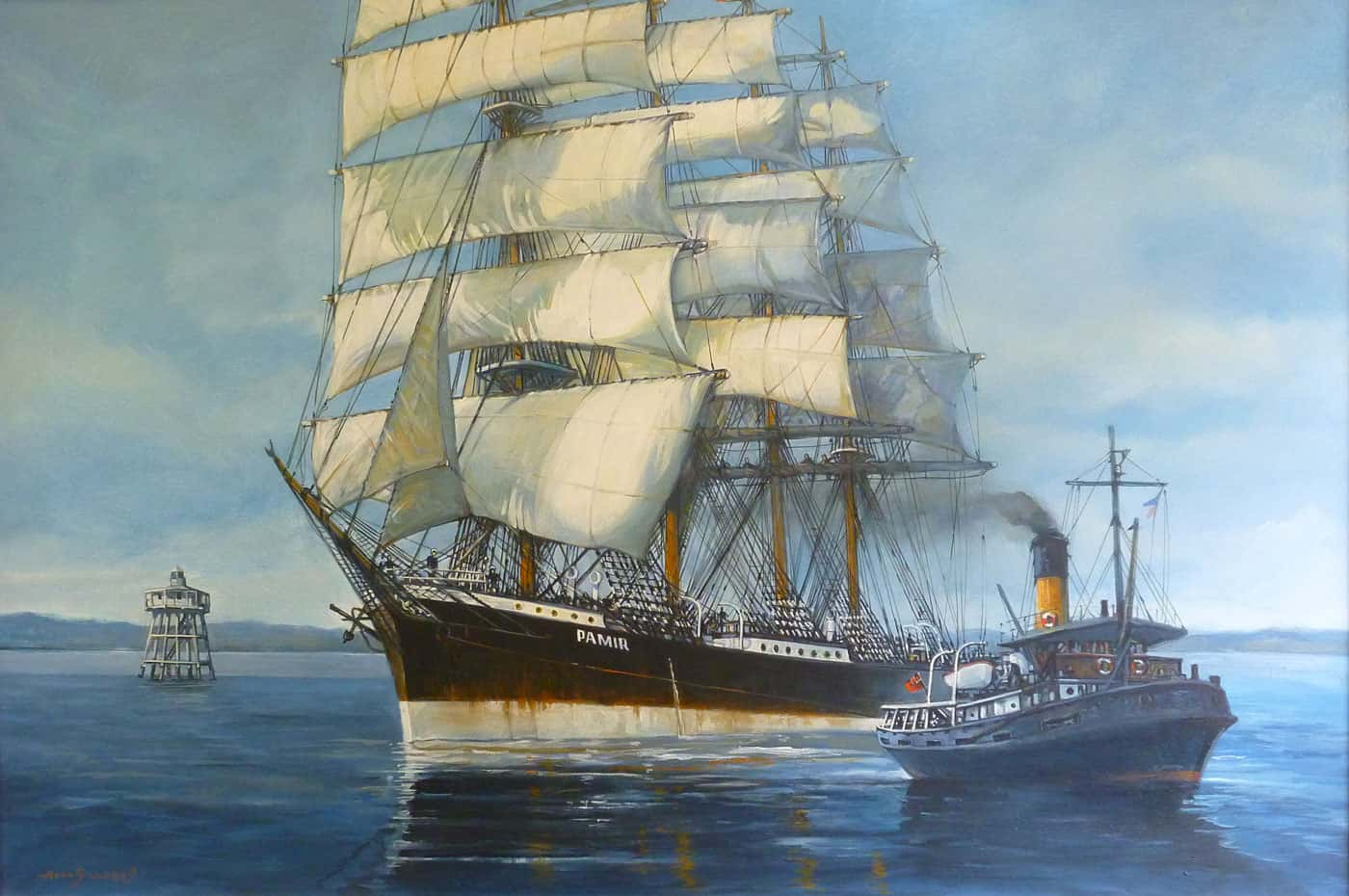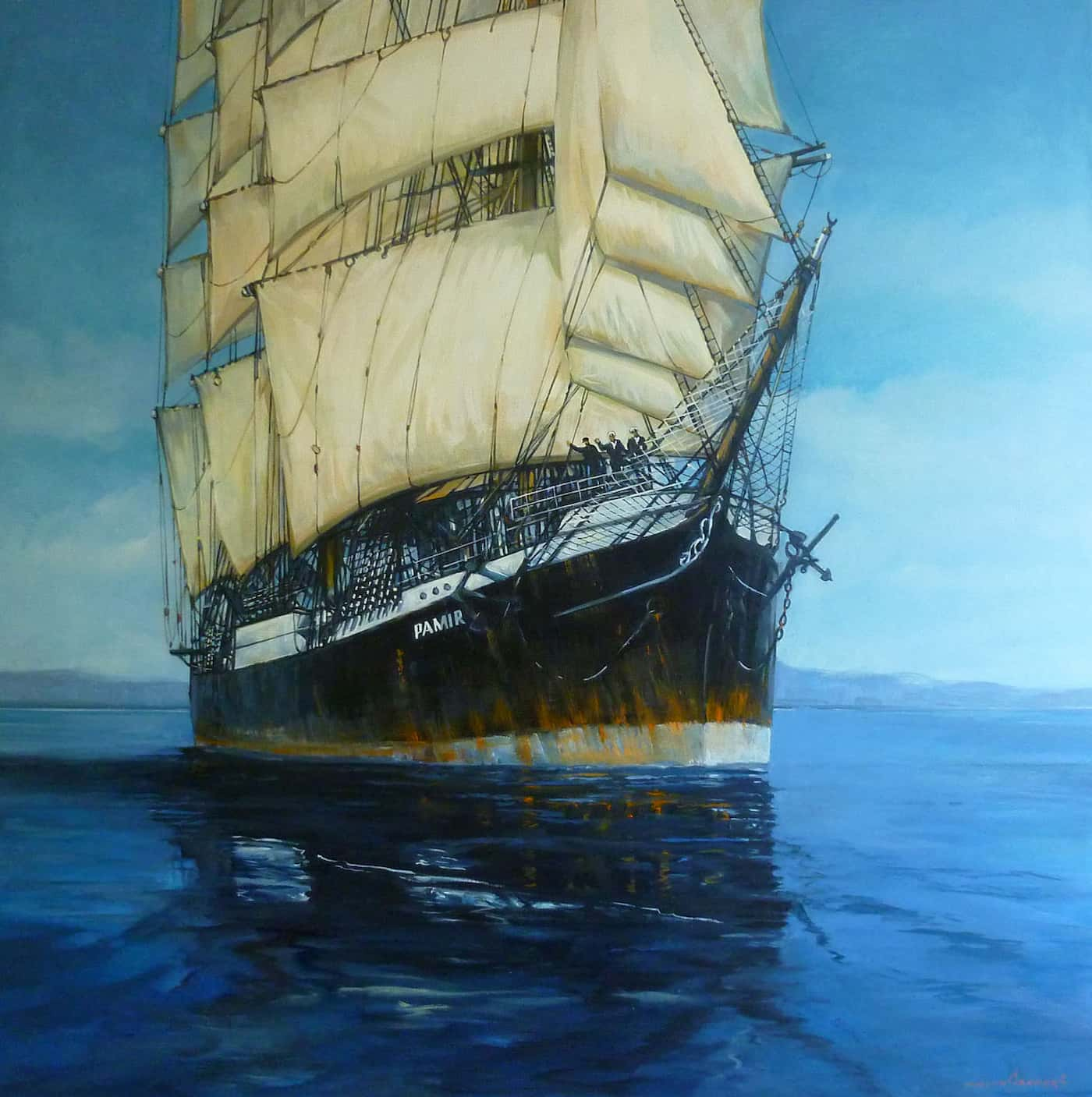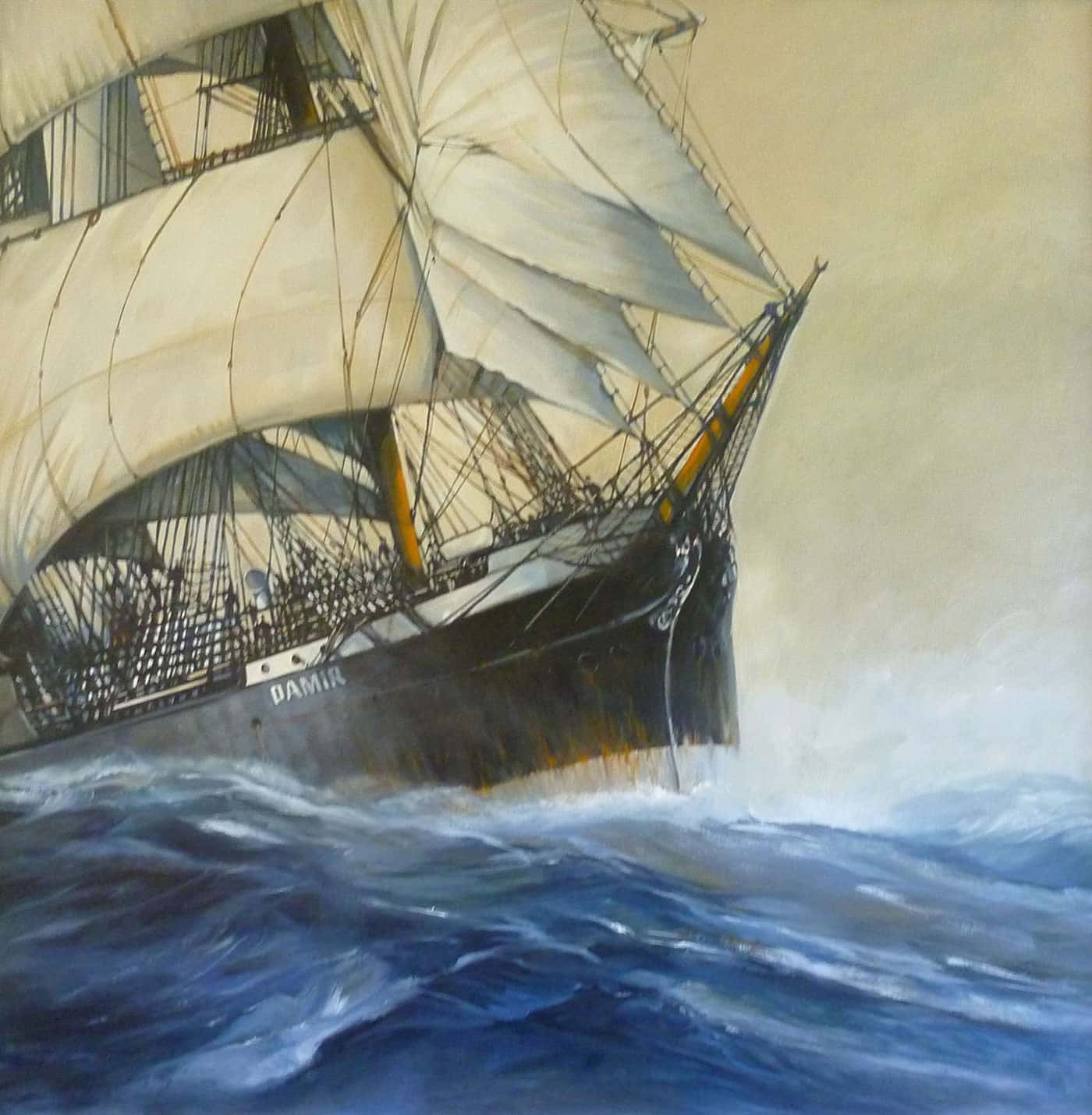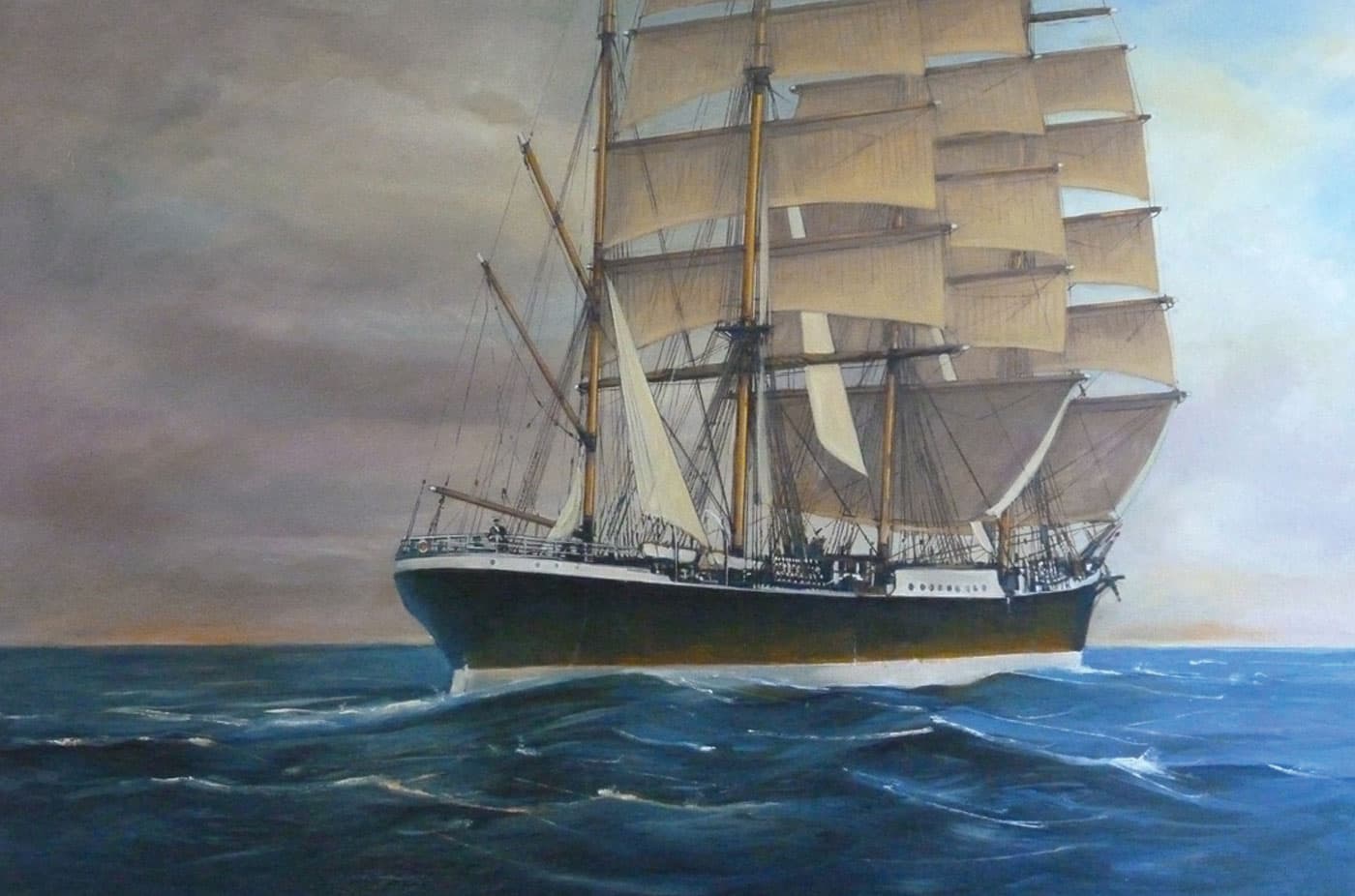A prize of war for the New Zealand Government 1941-1948.
The Pamir’s stately arrival in New Zealand under a full press of sail, became an enduring image for many New Zealanders. The Finish ship, The Pamir had a touch of magic about her and was a graceful example of the Windjammers, – the last of the stately ‘Flying P Class’. The Pamir was seized by the NZ Government at the outbreak of WW2, as Finland was technically in a state of war with the Allied Powers.
During the war years, the Pamir undertook eight voyages from Wellington to San Francisco and Vancouver, carrying nitrate for the war effort.
The barque’s graceful hull, lofty masts and sails, stirred the imagination of many New Zealanders. To sail on the Pamir became an obsession for hundreds of young New Zealand men, and when she was brought into service, those accepted for each voyage counted themselves most fortunate.
